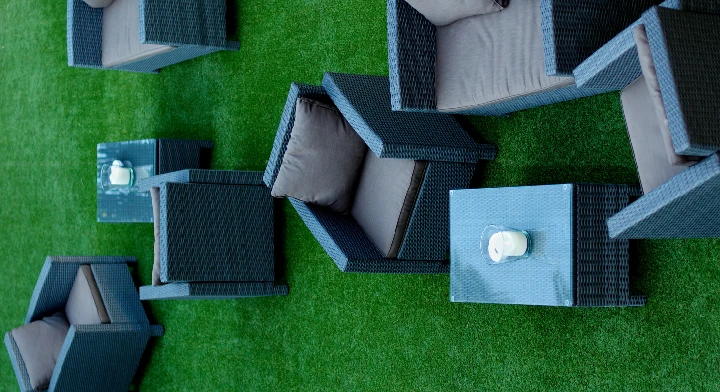
- Afrikaans
- Arabic
- Belarusian
- Bengali
- Czech
- Danish
- Dutch
- English
- Esperanto
- Estonian
- Finnish
- French
- German
- Greek
- Hindi
- Hungarian
- Icelandic
- Indonesian
- irish
- Italian
- Japanese
- kazakh
- Rwandese
- Korean
- Kyrgyz
- Lao
- Latin
- Latvian
- Malay
- Mongolian
- Myanmar
- Norwegian
- Persian
- Polish
- Portuguese
- Romanian
- Russian
- Serbian
- Spanish
- Swedish
- Tagalog
- Tajik
- Thai
- Turkish
- Turkmen
- Ukrainian
- Urdu
- Uighur
- Uzbek
- Vietnamese
Artificial Turf for a Lush Green Lawn Year-Round
Oct . 12, 2024 05:39 Back to list
The Allure of Fake Green Grass A Modern Perspective
As urbanization continues to expand, the once-vibrant greens of nature are often replaced by concrete jungles and synthetic alternatives. Among these alternatives, fake green grass, or artificial turf, has emerged as a popular choice for many homeowners, businesses, and sporting facilities. Its aesthetic appeal, low maintenance, and versatility have ignited a debate about the environmental implications and the psychological effects of a material often touted as a perfect replacement for natural grass.
The Aesthetic Appeal
One of the most convincing arguments in favor of fake green grass is its pristine appearance. Unlike natural grass, which can suffer from browning, patchiness, and wear, artificial turf maintains a consistent, lush green look year-round. For homeowners seeking a picturesque lawn, fake grass offers an ideal solution that requires little effort to keep immaculate. Furthermore, it can enhance the visual appeal of residential and commercial properties, making them more attractive to potential buyers or clients.
For many, the allure of fake grass goes beyond aesthetics. It provides a space for recreation and relaxation without the variable conditions associated with natural lawns. Families can enjoy barbecues, children can play freely, and pets can roam without the worry of muddy paws or dead patches in the lawn. In this context, artificial turf transcends its basic function, becoming a central gathering point for social interactions and cherished family memories.
Minimal Maintenance
Artificial turf comes with a significant advantage low maintenance. Natural grass requires constant care, including mowing, watering, fertilizing, and pest control. This can be time-consuming and expensive, particularly in areas where water scarcity is a concern. In contrast, fake green grass is easy to install and requires minimal upkeep. Occasional brushing and rinsing are usually sufficient to keep it looking fresh.
This ease of maintenance is particularly appealing for busy urban dwellers who may not have the time or resources to devote to maintaining a natural lawn. Additionally, artificial turf can be a practical solution for commercial spaces, where maintaining a natural lawn can be logistically challenging and costly. Sports facilities and fields benefit greatly from artificial turf, as it can withstand heavy use without the risk of damage or degradation.
fake green grass

Environmental Considerations
Despite its many advantages, fake green grass is not without controversy, particularly regarding environmental impact. On one hand, it conserves water and reduces the need for chemical fertilizers and pesticides. This can lead to a decline in urban runoff and pollution, benefiting local ecosystems. However, the environmental footprint of production, installation, and eventual disposal of synthetic turf raises concerns. Most artificial grass is made from petroleum-based materials, contributing to fossil fuel dependency.
Another aspect to consider is the heat island effect often observed with artificial surfaces, which can absorb and retain heat more than natural grass. This could contribute to higher local temperatures, affecting microclimates and potentially leading to increased energy costs for cooling nearby buildings.
A Psychological Perspective
The psychological effects of fake green grass also warrant examination. While many find the vibrant color and uniformity comforting, others may feel a sense of disconnection from nature. The absence of natural elements can impact mental well-being and diminish the sensory experience of outdoor environments.
In contrast, contact with natural grass — with its texture, scent, and the presence of diverse flora and fauna — offers a therapeutic connection to nature. The idea of “biophilia,” or the innate connection humans have with nature, suggests that reliance on artificial materials may hinder our emotional and psychological well-being.
Conclusion
Ultimately, the choice to opt for fake green grass reflects a broader trend in modern society. While it presents undeniable benefits in terms of maintenance, consistency, and aesthetic appeal, it also challenges us to engage critically with environmental and psychological implications. As we navigate this increasingly artificial landscape, striking a balance between convenience and our fundamental connection to nature is essential for fostering a sustainable future. Whether we choose authenticity or convenience, the decision reverberates beyond our lawns, impacting our lives, communities, and the environment around us.
-
The Benefits of Artificial Turf for Indoors
NewsJul.15,2025
-
How Artificial Grass Suppliers Ensure Quality Products
NewsJul.15,2025
-
Artificial Grass and Pets: A Space for Relaxation
NewsJul.08,2025
-
Balcony & Outdoor Decoration with Artificial Grass
NewsJul.08,2025
-
Best Indoor Artificial Grass for Home
NewsJul.07,2025
-
Best Pet Turf for Dogs: Safe & Durable Artificial Grass Options
NewsJul.07,2025
Products categories









